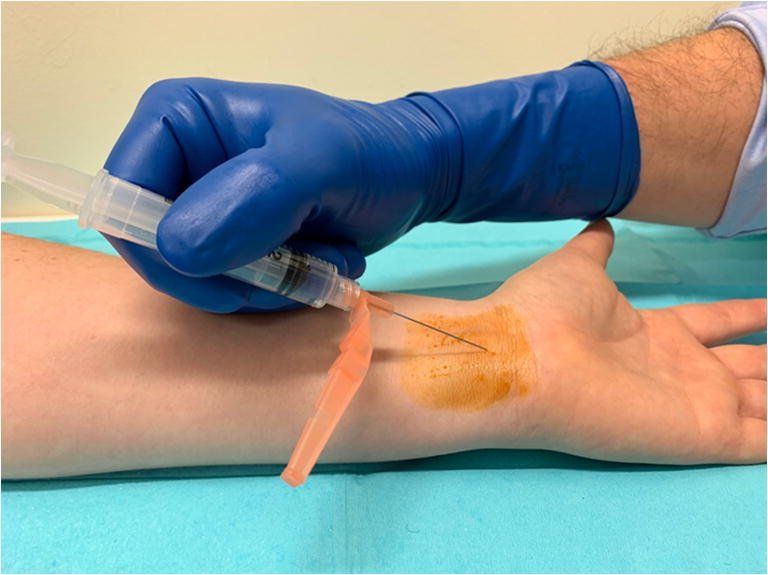Best Treatments for Wrist Tendonitis
From Dr. Z - Carpal tunnel syndrome specialist
Best Treatments for Wrist Tendonitis
The best treatments for wrist tendonitis are conservative. They are simple and can be done at home. They involve methods like rest, ice, compression, elevation, splinting, massage, and pain medications. Combined with physical therapy to regain strength and function, these treatments are usually very successful within a couple weeks.
If you have hand or wrist pain when preforming certain tasks, then you might have wrist tendonitis. Treat it soon because it can easily worsen. This article outlines the best treatments and how to perform them so you can eliminate wrist tendonitis pain for good.

1. Rest
The very first step in eliminating tendonitis pain is to avoid any activities that aggravate your wrist pain. Those activities likely caused the problem to begin with. If you keep doing those harmful activities, you can potentially worsen your tendonitis.
Therefore, identify which hand or wrist activity most likely stressed your wrist. Then take measures to avoid it, or else modify/minimize it to keep your wrist from getting strained again.
2. Splinting & Bracing
A splint or brace can help immobilize your wrist and reduce movement, allowing the tendons to heal. But be cautious about when to wear the brace.
Performing your normal daily hand activities while wearing a brace can over-stress your wrist. Some people feel the need to wear a brace to relieve pain. But this will often worsen your condition. That's because you'll try to work with your hand, but the brace will restrict movement. Then, you just subconsciously fight the brace in addition to doing your normal work. In other words, you're better off not adding the extra work to your wrist.
But if you
know
you will be over-stressing your hand more than usual, then it's appropriate to wear a brace during the day. The brace will help protect your wrist from over-bending.

3. RICE Method
The RICE method stands for Rest, Ice, Compression, Elevation. It's best to do all four of these remedies.
Rest
As discussed above, rest your wrist as much as you can and avoid activities that aggravate the pain. Mild to moderate wrist tendonitis will usually resolve in about 2 weeks with continuous rest.
Ice
Apply ice packs to the affected area for 15-20 minutes at a time, several times a day, This will help reduce inflammation and pain.
Compression
Use a compression sleeve or bandage (an "ACE bandage" works well) to provide support and reduce swelling. Don't compress the area so much that you stop circulation. Compress just enough to feel the squeeze.
Elevation
As much as you can, keep your wrist elevated above your heart. This helps reduce swelling.

4. Pain Relief Medicines
Over-the-counter pain relievers
Medicines like ibuprofen (Advil, Motrin) or naproxen (Aleve) can help reduce pain and inflammation. Use them only when needed because long term use can cause heart, kidney, and liver problems.
Prescription medicines
Sometimes your doctor may prescribe stronger pain relievers or anti-inflammatory medications. The most popular of these pain relief medicines are oxycodone and hydrocodone.
5. Cortisone Injections
Cortisone is a type of steroid, and a powerful anti-inflammatory medicine. It helps relieve pain almost instantly. Your doctor may inject cortisone directly into the affected tendon sheath to reduce inflammation and pain.

6. Physical Therapy
There are several types of physical therapy methods you can use as effective treatments for wrist tendonitis.
Exercises
Stronger muscle mean less trauma when a joint is stressed. A physical therapist can guide you through specific exercises for the fingers, hand, and wrist to strengthen the muscles around your wrist.
Stretching
Gentle stretching exercises can help improve range of motion and reduce stiffness. That's because stretching makes your tendons more supple and able to glide more smoothly. As a result, your flexibility is greatly improved.
Other therapies
Some therapists use treatments like ultrasound or electrical stimulation (TENS) to help reduce pain and inflammation.

8. Massage
Massage loosens fibrous restrictions and allows your tendons to move freely. The best type of massage is a deep tissue technique called myofascial release. While excellent as a treatment for wrist tendonitis, it's difficult to perform this treatment on yourself. Therefore, find a willing partner to help.
9. Nutrition
Most doctors advocate proper nutrition and supplementation for patients with wrist tendinosis. In particular, vitamin C, zinc, and manganese are most often cited because they are necessary for collagen production. Collagen repairs damaged tendons, which is why foods rich in these nutrients are vital to healthy tendons. Also necessary for a tendon's good health are vitamins B6 and E.
10. Platelet-Rich Plasma (PRP)
In more severe or chronic cases of wrist tendonitis, platelet-rich plasma (or PRP) can be used. This treatment for wrist tendonitis requires taking some of your own blood. Then platelets and other factors are separated which are important in the healing process.
The final product is injected into the area of your tendon. While effective, this therapy is relatively new, and not yet adopted by many doctors.
11. Surgery
It's rare that the conservative treatments above fail to provide relief. When this happens, your doctor may recommend surgery. The goal of surgery to relieve wrist tendonitis is to release the tendons from being trapped amongst thick, dense tissues. Surgery can also remove inflamed tissues. However, surgery is usually considered as a last resort.

12. Other Considerations
You can try other remedies in addition to those outlined above. In fact, most doctors advise that a multi-treatment approach is often the quickest and most effective way to eliminate wrist tendonitis pain.
Ergonomics
Sometimes wrist tendonitis is related to repetitive movements or poor posture. In those cases, consider making changes to your workstation or desk habits to reduce strain on your wrist.
Modify activities
If certain activities aggravate your wrist, try to avoid them altogether until your tendonitis improves. If you must do them, try to modify how you use your hands to minimize stress and strain. For example, are there ergonomic tools you can use instead of your standard tools?
See a doctor
If your tendonitis wrist pain is severe or doesn't improve with conservative home treatment, see your doctor. They may refer you to a hand specialist for additional help.
Summary
Most treatments for wrist tendonitis are conservative, at-home remedies or combination of remedies. The ultimate goal of treating wrist tendonitis it to reduce inflammation in and around the tendon. The chief ways to accomplish this goal are rest, avoidance, ice, compression, physical therapy, and massage.

